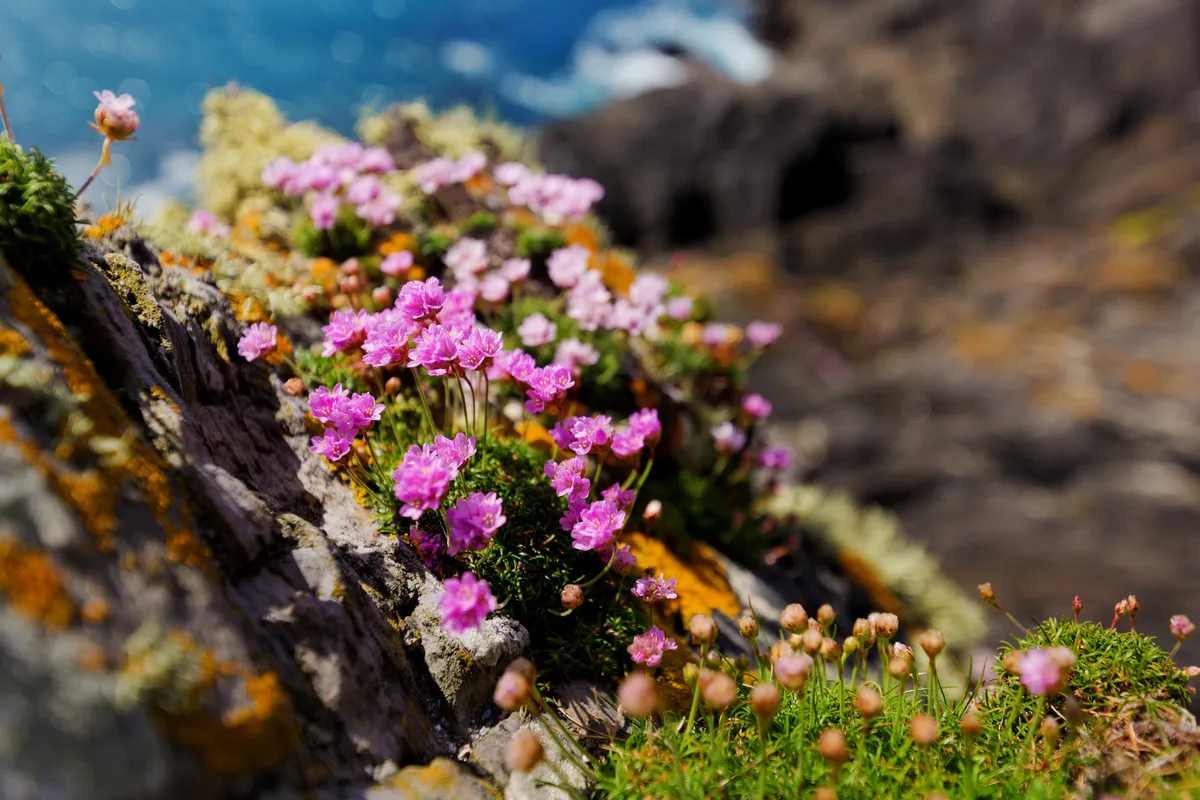Thrift (also known as sea thrift or sea pink) is a halophyte - a plant adapted to life in saline conditions that would kill many other species.
It transports salty water from its roots and compartmentalises it in older leaves, where it uses a variety of strategies to protect itself.

Plants on sea cliffs, alternately lashed by salt spray and washed by rain, experience fluctuating levels of salt. When salinity levels rise, they produce an amino acid called proline that prevents leaf damage.
Plants that are permanently exposed to saline conditions produce pigments called betalains, which have the same function.
In both cases old leaves with high salt levels are constantly shed and replaced with new ones from the central growing point of the plant.
There are also inland populations of thrift that are not salt-tolerant, but can grow on spoil tips from copper mines because they can safely accumulate levels of this toxic metal.
Main image: Sea thrift wildflowers growing by the South West Coast Path. © AL Hedderly/Getty

